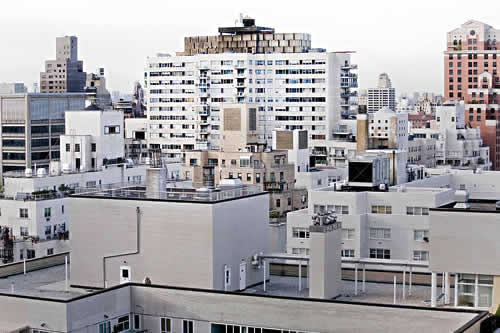Prewar buildings have charm, elegance, and gracious space, whereas new construction is sleek and sophisticated and features lots of amenities. So what can be said about those postwar white glazed-brick buildings with their distinctive wedding cake shape?

- Piotr Redlinski for The New York Times
Bland on the outside but functional on the inside, these stolid structures, built in the 1950s and early '60s, earned a reputation worthy of that "Father Knows Best" era: Not flashy or sexy, admittedly, but sensible, decent, and reliable—the "nice guy" with whom you could settle down and have a comfortable, if not necessarily exciting, life.
As it turns out, the nice guy hasn't aged well.
A recent article in The New York Times discusses how some of these buildings are falling apart, brick by white brick. The deterioration isn't caused by the brick's color, however, but by its glaze, which prevents water that gets trapped behind the bricks from evaporating.
The glazed-brick design was supposed to make the buildings more waterproof, but the concept "backfired," according to the head of Rand's building survey team, Jon Colatrella. As Jon explained to the Times: "Once that moisture gets trapped in between those two materials, essentially it freezes over time and it just starts to spall and pop and crack that front face right off."
In other words, the frosting is falling off the wedding cake.
Rand has worked on its share of white glazed-brick buildings over the years—there are about 140 of them in the city, according to the Times—and we can attest to their defective facades and the leaks they engender. Dozens of these buildings are now facing massive exterior repair projects, some involving "reskinning"—i.e., completely removing and rebuilding the facades with new (non-glazed) bricks. Jon estimates that a full brick replacement on a 20- to 25-story building would cost approximately $6 million to $8 million dollars. That's one expensive refrosting.
Of course, white-brick buildings have their defenders, as this other Times article points out. "Nobody walks in and says, 'I can't wait to buy an apartment in a white-brick building,'" says one real estate consultant quoted by the Times. "But after they see the entire marketplace, the white bricks start to look interesting. You get more bang for your buck."
Is the honeymoon over for these wedding-cake-shape buildings? If you live in or manage one, we'd love to hear your view.
